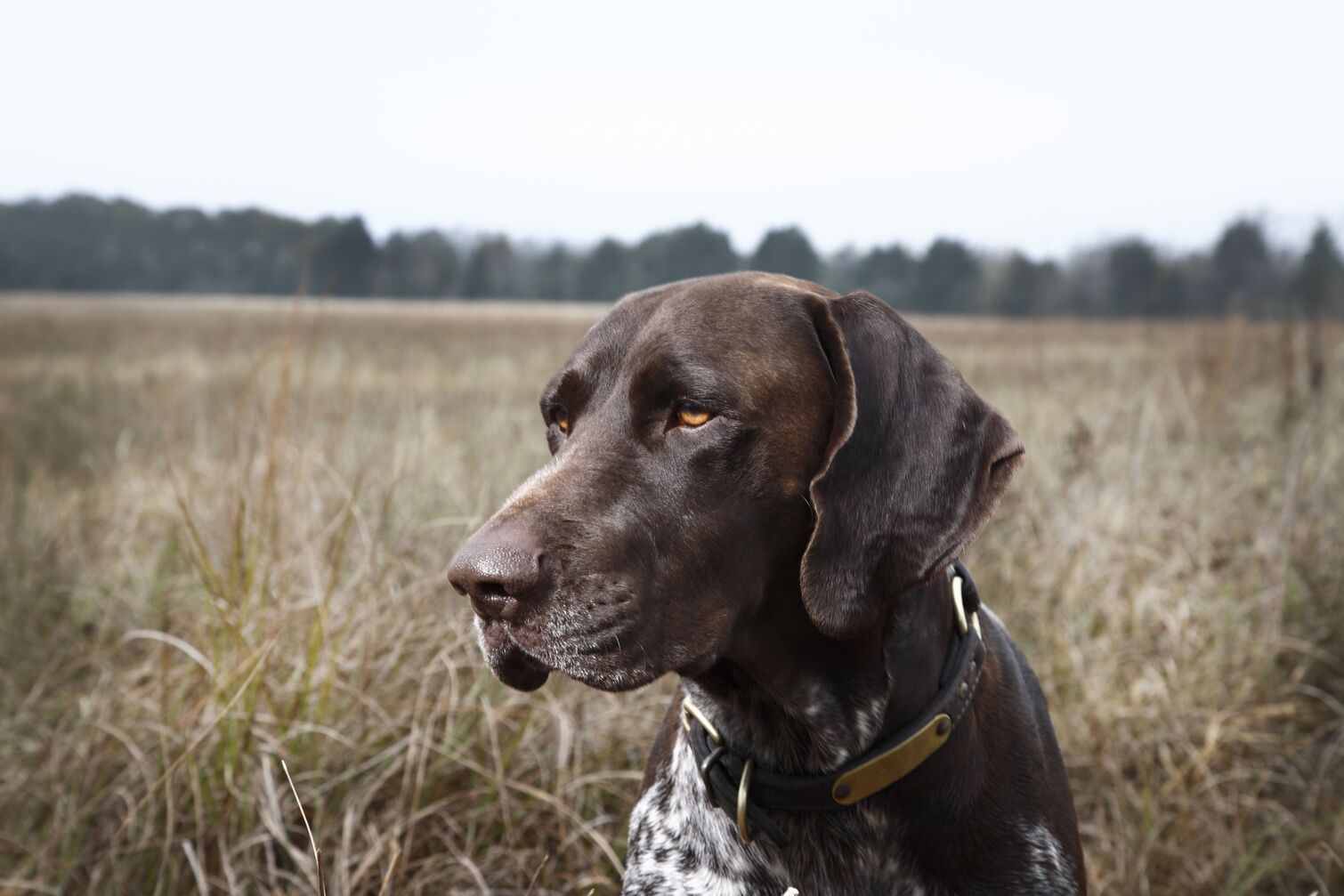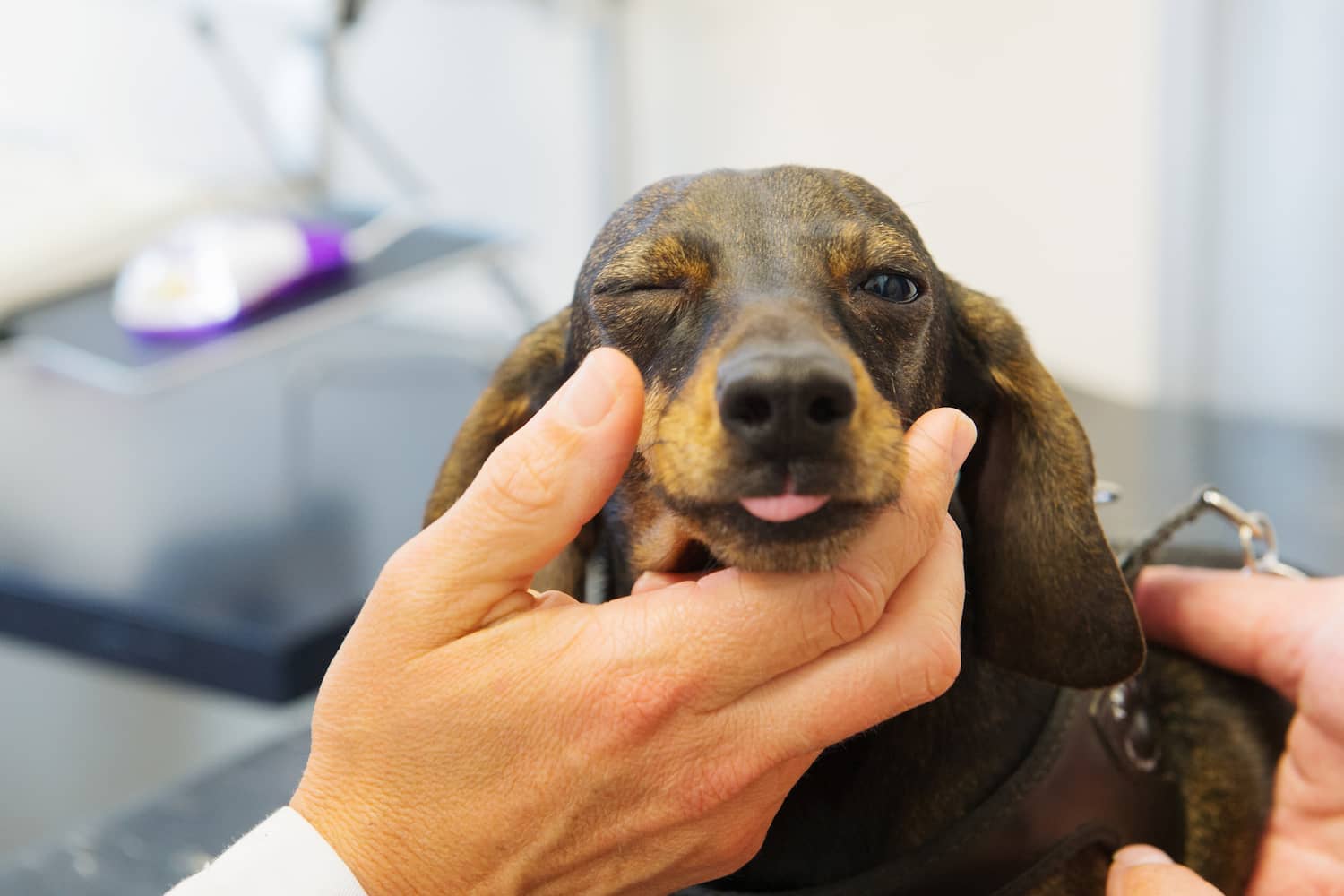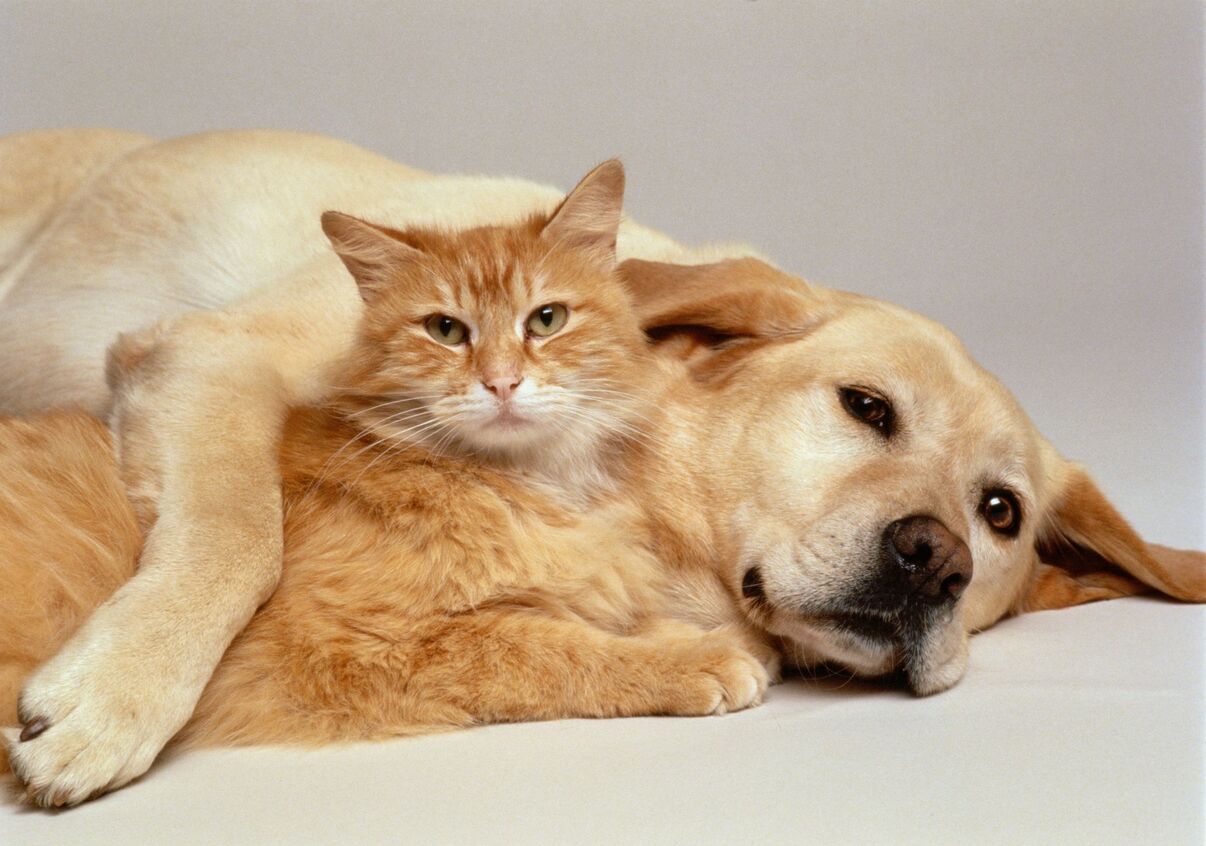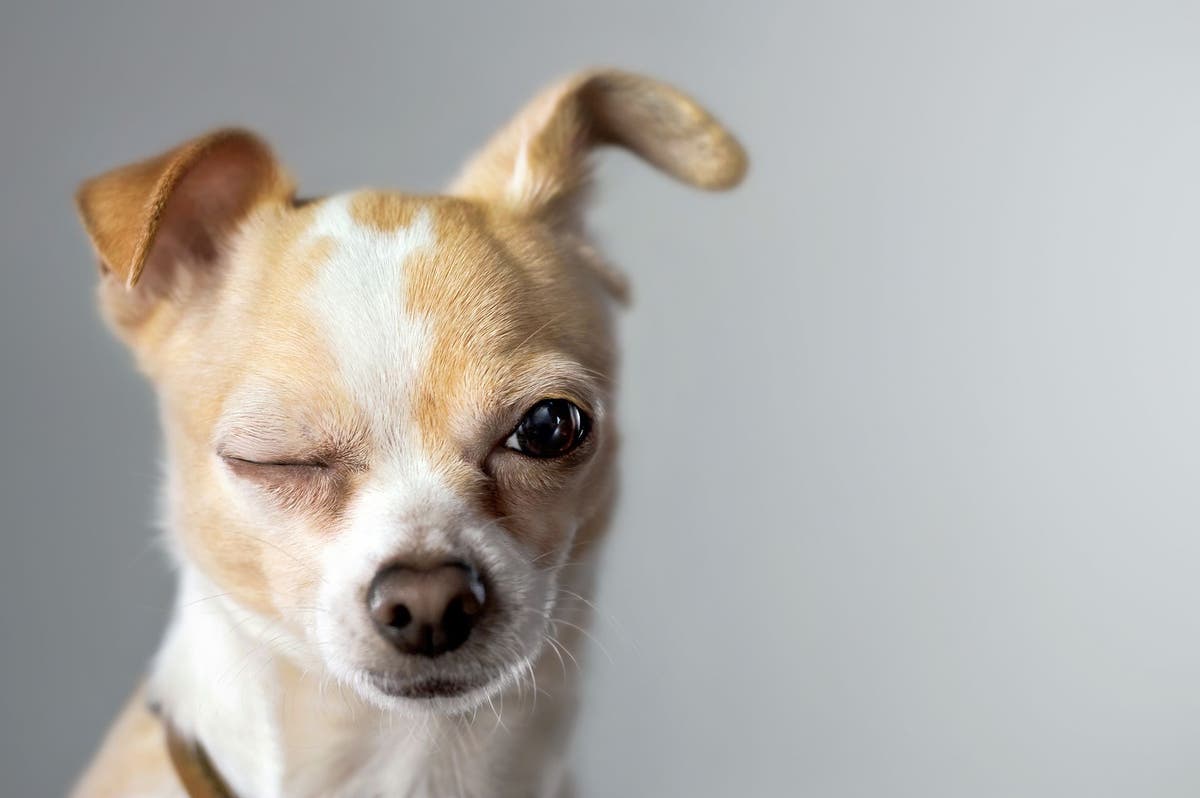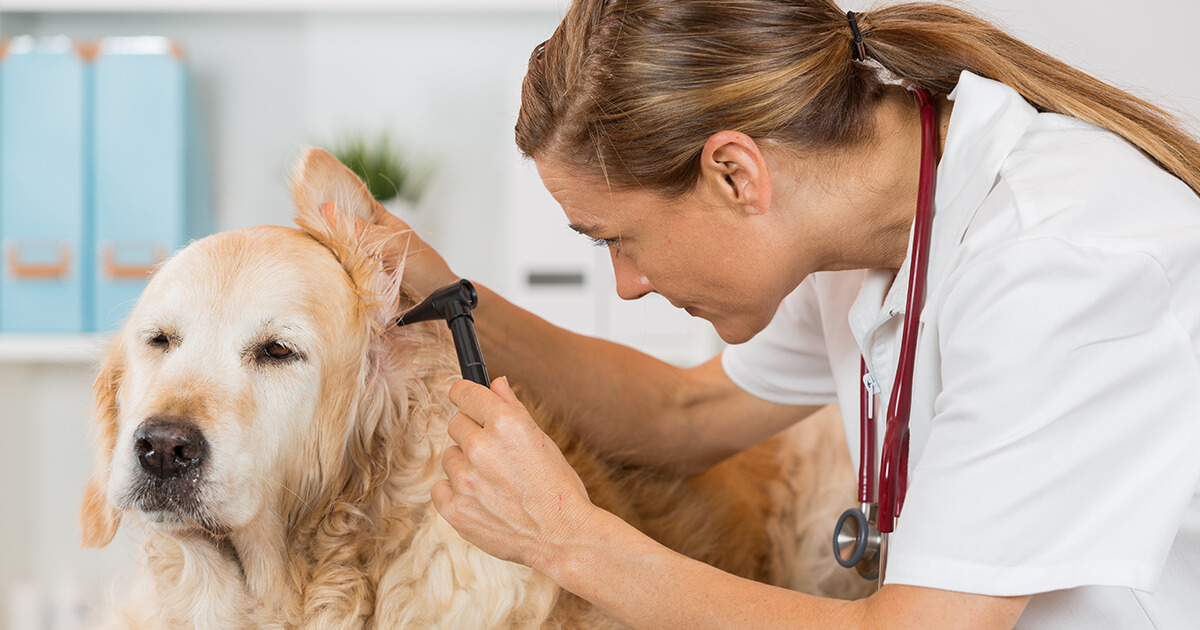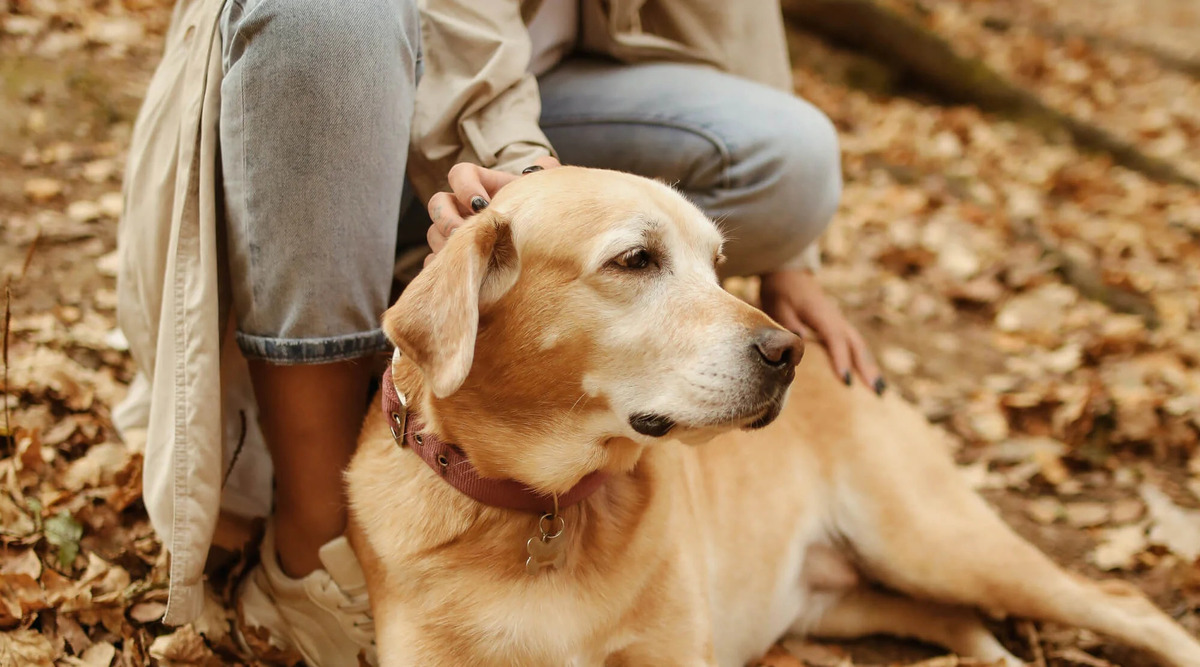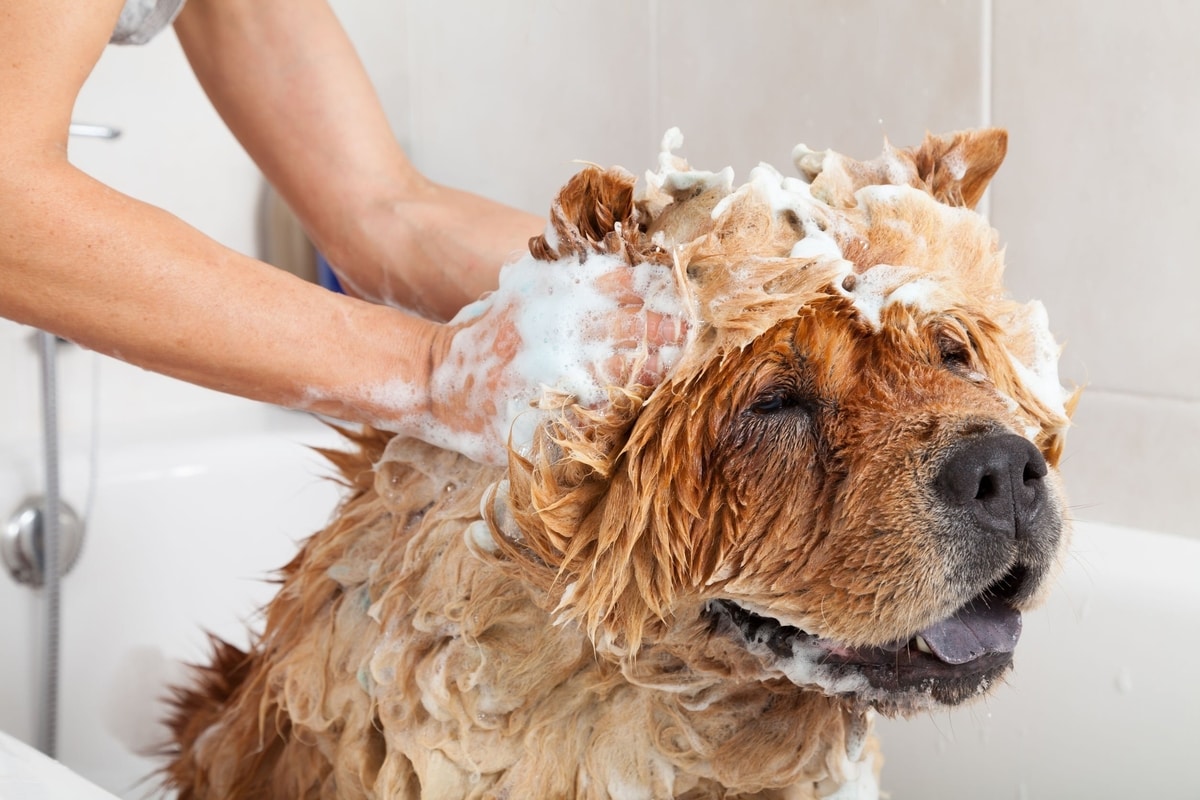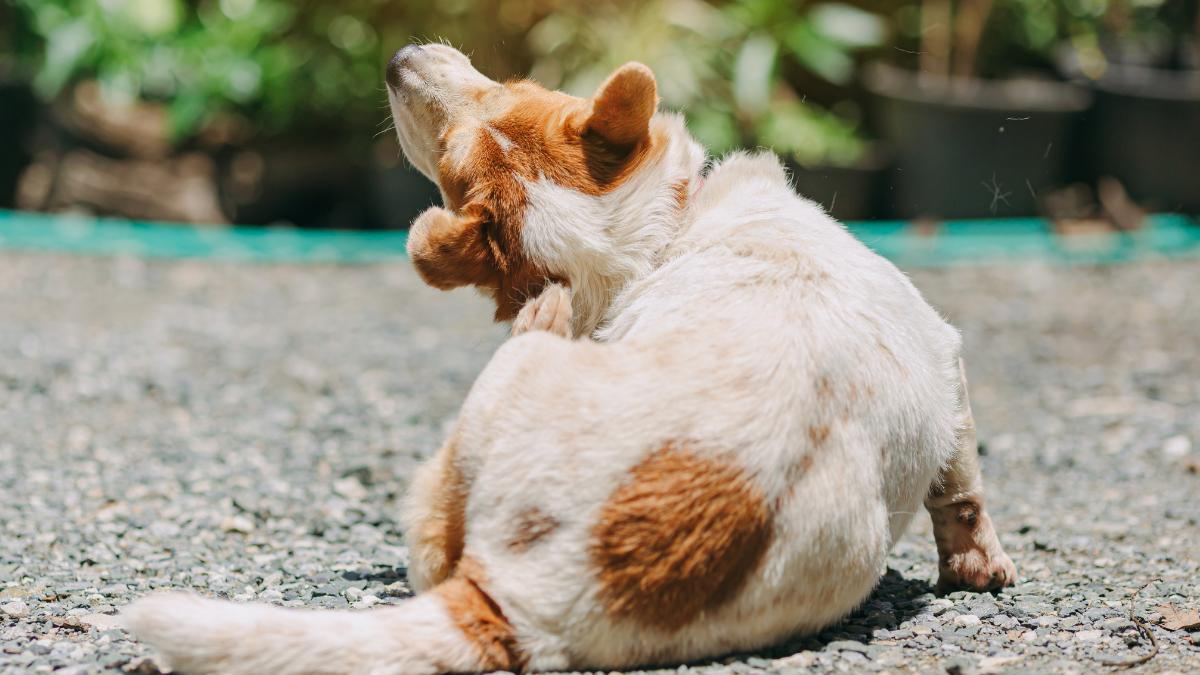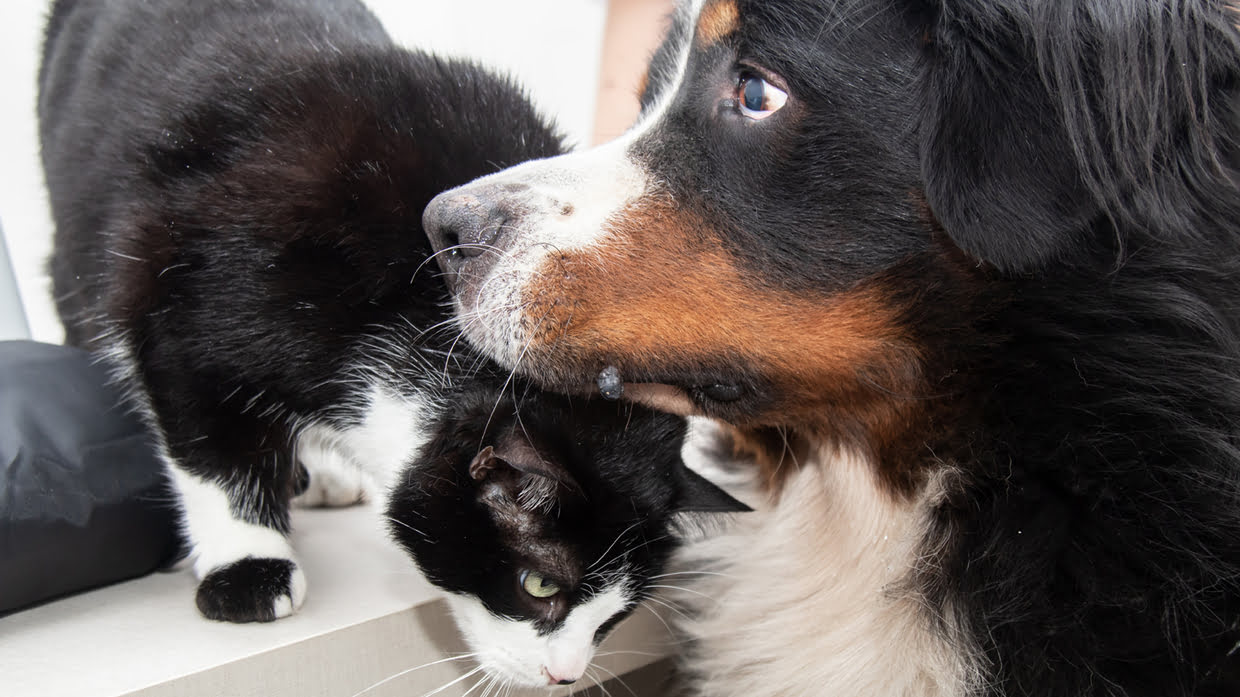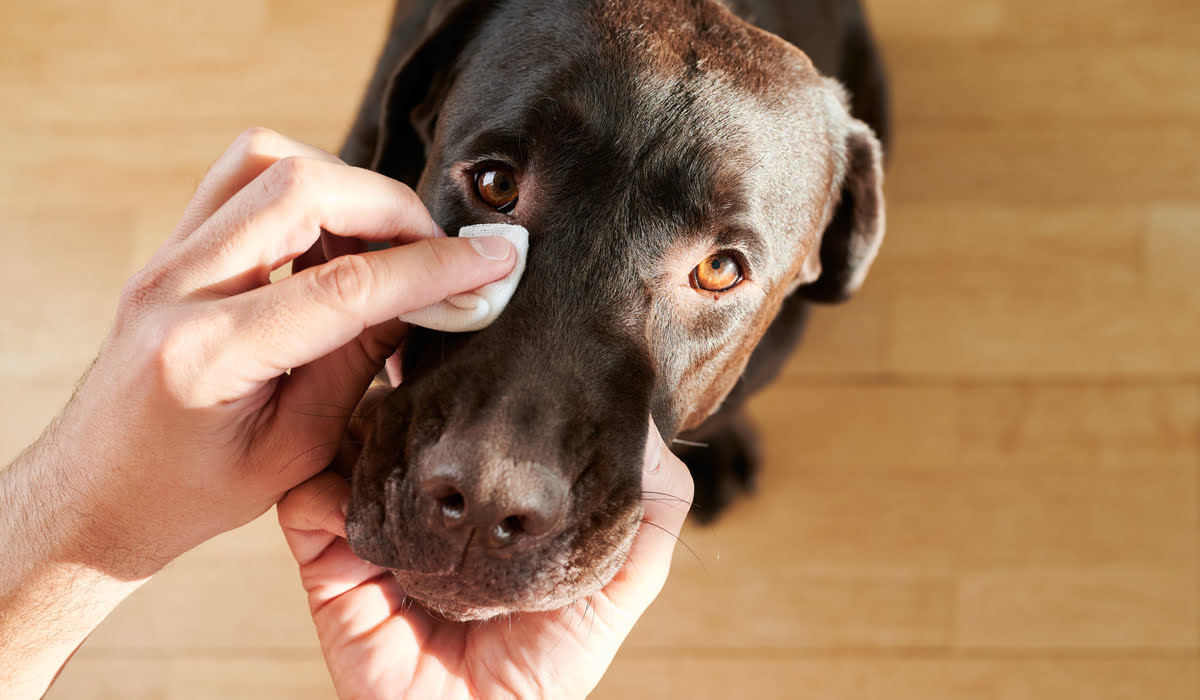Home>Health & Wellness>Common Health Issues>Eye and Ear Health>My Cat Scratched My Dog’s Eye: What Do I Do?


Eye and Ear Health
My Cat Scratched My Dog’s Eye: What Do I Do?
Published: February 12, 2024
If your cat scratched your dog's eye, it's crucial to seek veterinary care immediately to prevent further damage. Learn how to protect your pet's eye and ear health.
(Many of the links in this article redirect to a specific reviewed product. Your purchase of these products through affiliate links helps to generate commission for Pawsomeoldies.com, at no extra cost. Learn more)
Table of Contents
Introduction
When a beloved pet experiences an injury, it can be a distressing and concerning situation for pet owners. One common scenario that can cause worry is when a cat scratches a dog's eye. This unexpected event can leave pet owners feeling uncertain about the best course of action to take. Understanding the potential severity of the injury, seeking prompt veterinary care, and implementing preventive measures are crucial steps in ensuring the well-being of the affected pet.
In this article, we will delve into the necessary steps to take when a cat scratches a dog's eye, providing valuable insights and guidance to help pet owners navigate this challenging situation. By gaining a deeper understanding of the severity of the injury, learning how to seek appropriate veterinary care, and discovering preventive measures, pet owners can effectively address and manage such incidents, ultimately safeguarding the health and safety of their pets.
Understanding the Severity of the Injury
When a cat scratches a dog's eye, it is essential to promptly assess the severity of the injury to determine the appropriate course of action. The delicate nature of the eye and the potential for complications necessitate a thorough understanding of the potential implications of such an injury.
-
Assessing the Damage: The first step in understanding the severity of the injury is to carefully examine the affected eye. Look for signs of redness, swelling, discharge, or excessive tearing. If the dog is exhibiting signs of discomfort, such as squinting or pawing at the eye, it indicates that the injury may be causing significant discomfort.
-
Potential Complications: A cat's scratch on a dog's eye can lead to various complications, including corneal ulcers, inflammation, and potential infections. These complications can result in vision impairment or even permanent damage if left untreated.
-
Seeking Professional Evaluation: It is crucial to seek veterinary attention promptly. A veterinarian can conduct a comprehensive examination to assess the extent of the injury and determine the appropriate treatment. They may perform tests to evaluate the cornea's integrity and check for any foreign bodies that could exacerbate the injury.
-
Understanding the Impact on Vision: Depending on the severity of the scratch, the dog's vision may be affected. Even minor scratches can cause discomfort and sensitivity to light, impacting the dog's overall well-being.
-
Potential for Secondary Infections: A scratched eye is susceptible to secondary infections, which can exacerbate the initial injury and prolong the healing process. Understanding the risk of infections underscores the importance of proactive treatment and preventive measures.
By comprehensively understanding the severity of the injury, pet owners can make informed decisions regarding the next steps to take. The potential complications and impact on the dog's well-being underscore the urgency of seeking professional veterinary care to address the injury effectively.
Seeking Veterinary Care
Seeking prompt veterinary care is paramount when a cat scratches a dog's eye. The delicate nature of ocular injuries necessitates professional evaluation and treatment to mitigate potential complications and safeguard the dog's vision and overall well-being.
Upon discovering that a cat has scratched a dog's eye, pet owners should prioritize seeking veterinary care without delay. Even seemingly minor scratches can lead to significant discomfort and complications if left untreated. The following steps outline the essential measures to take when seeking veterinary care for a scratched eye:
-
Immediate Contact with a Veterinarian: As soon as the injury is identified, pet owners should contact a veterinarian to schedule an appointment for an evaluation. Many veterinary clinics prioritize urgent cases, especially those involving eye injuries, to provide timely care and prevent further complications.
-
Avoiding Home Remedies: While it may be tempting to attempt home remedies or over-the-counter treatments, it is crucial to refrain from doing so. Applying any substances to the injured eye without professional guidance can exacerbate the injury and impede the veterinarian's ability to assess the extent of the damage accurately.
-
Transporting the Dog Comfortably: When transporting the injured dog to the veterinary clinic, it is important to ensure their comfort and safety. Placing the dog in a secure and well-ventilated carrier or using a leash to prevent further agitation of the injured eye is advisable.
-
Providing Pertinent Information to the Veterinarian: During the veterinary consultation, pet owners should provide detailed information about the circumstances surrounding the injury, including the time of the incident, the cat's behavior, and any observed changes in the dog's eye condition. This information can aid the veterinarian in formulating an accurate diagnosis and treatment plan.
-
Comprehensive Ocular Examination: The veterinarian will conduct a thorough examination of the injured eye, assessing the extent of the scratch, signs of inflammation, and potential complications. They may utilize specialized equipment to evaluate the cornea's integrity and identify any foreign bodies that may have caused or exacerbated the injury.
-
Treatment and Follow-Up Care: Based on the assessment, the veterinarian will recommend an appropriate treatment plan, which may include topical medications, ointments, or oral antibiotics to prevent infections. Additionally, the veterinarian may schedule follow-up appointments to monitor the healing progress and ensure the dog's recovery.
Seeking veterinary care promptly and following the veterinarian's recommendations diligently are crucial steps in addressing a cat-scratched eye. By entrusting the care of the injured eye to a qualified professional, pet owners can ensure that their dog receives the necessary treatment and support to facilitate a swift and successful recovery.
In summary, seeking veterinary care for a cat-scratched eye is a proactive and responsible approach that prioritizes the well-being of the affected pet. Pet owners should remain attentive to the veterinarian's guidance and provide a supportive environment for their dog's recuperation.
Preventing Future Incidents
Preventing future incidents of a cat scratching a dog's eye involves proactive measures to create a safe and harmonious environment for pets. By implementing preventive strategies, pet owners can minimize the risk of such injuries and promote the well-being of their furry companions.
Creating Separate Safe Spaces
Establishing separate safe spaces for cats and dogs within the home can significantly reduce the likelihood of confrontations that may lead to injuries. Providing designated areas where each pet can retreat and feel secure fosters a sense of autonomy and minimizes potential conflicts.
Supervised Interactions
When allowing cats and dogs to interact, especially during the initial stages of their relationship, supervision is crucial. By closely monitoring their interactions, pet owners can intervene promptly if tensions escalate, thereby preventing potential altercations and injuries.
Positive Reinforcement Training
Implementing positive reinforcement training techniques can help foster positive associations between cats and dogs. Rewarding desirable behaviors, such as peaceful coexistence and respectful boundaries, encourages a harmonious relationship and reduces the likelihood of aggressive encounters.
Environmental Enrichment
Enriching the living environment with stimulating toys, scratching posts for cats, and engaging activities for dogs can redirect their energy and prevent boredom-induced conflicts. Providing outlets for natural behaviors and mental stimulation promotes a balanced and contented pet dynamic.
Veterinary Consultation
Seeking guidance from a veterinarian regarding behavior modification and potential stressors can offer valuable insights into addressing underlying issues that may contribute to inter-pet conflicts. Professional advice can aid in developing tailored strategies to mitigate tensions and promote a peaceful cohabitation.
Read more: What To Do If Your Dog Scratches Its Eye
Regular Health Assessments
Regular veterinary check-ups for both cats and dogs are essential for identifying any underlying health concerns that may manifest as behavioral issues. Addressing physical discomfort or medical conditions promptly can contribute to a harmonious pet environment and reduce the likelihood of confrontations.
Implementing these preventive measures empowers pet owners to create a nurturing and secure environment for their pets, minimizing the risk of future incidents involving cat-dog interactions. By prioritizing proactive strategies, pet owners can foster a peaceful coexistence and enhance the well-being of their cherished companions.
Conclusion
In conclusion, the well-being of our pets is a top priority, and addressing a cat scratching a dog's eye requires swift and attentive action. Understanding the severity of the injury, seeking prompt veterinary care, and implementing preventive measures are essential components of effectively managing such incidents.
When a cat scratches a dog's eye, the potential implications can range from discomfort and inflammation to more severe complications that may impact the dog's vision and overall health. It is crucial for pet owners to assess the injury promptly and recognize the signs that warrant professional evaluation. By understanding the potential severity of the injury, pet owners can make informed decisions and take the necessary steps to ensure their dog's well-being.
Seeking veterinary care without delay is paramount when a cat scratches a dog's eye. Professional evaluation and treatment are crucial in mitigating potential complications and facilitating the dog's recovery. By promptly contacting a veterinarian, refraining from home remedies, and providing pertinent information about the injury, pet owners can ensure that their dog receives the necessary care and support to address the scratched eye effectively.
Furthermore, implementing preventive measures to minimize the risk of future incidents involving cat-dog interactions is essential. Creating separate safe spaces, supervising interactions, and implementing positive reinforcement training can foster a harmonious relationship between pets and reduce the likelihood of confrontations that may lead to injuries.
By prioritizing the well-being of our pets and taking proactive measures to address and prevent incidents such as a cat scratching a dog's eye, pet owners can create a safe and nurturing environment for their cherished companions. Through attentiveness, prompt action, and a commitment to fostering positive pet dynamics, pet owners can ensure that their pets thrive in a harmonious and secure environment.
In essence, the bond between pets and their owners is built on care, compassion, and a commitment to providing the best possible quality of life. By addressing and managing incidents such as a cat scratching a dog's eye with diligence and empathy, pet owners uphold this bond and demonstrate their unwavering dedication to the well-being of their beloved pets.
